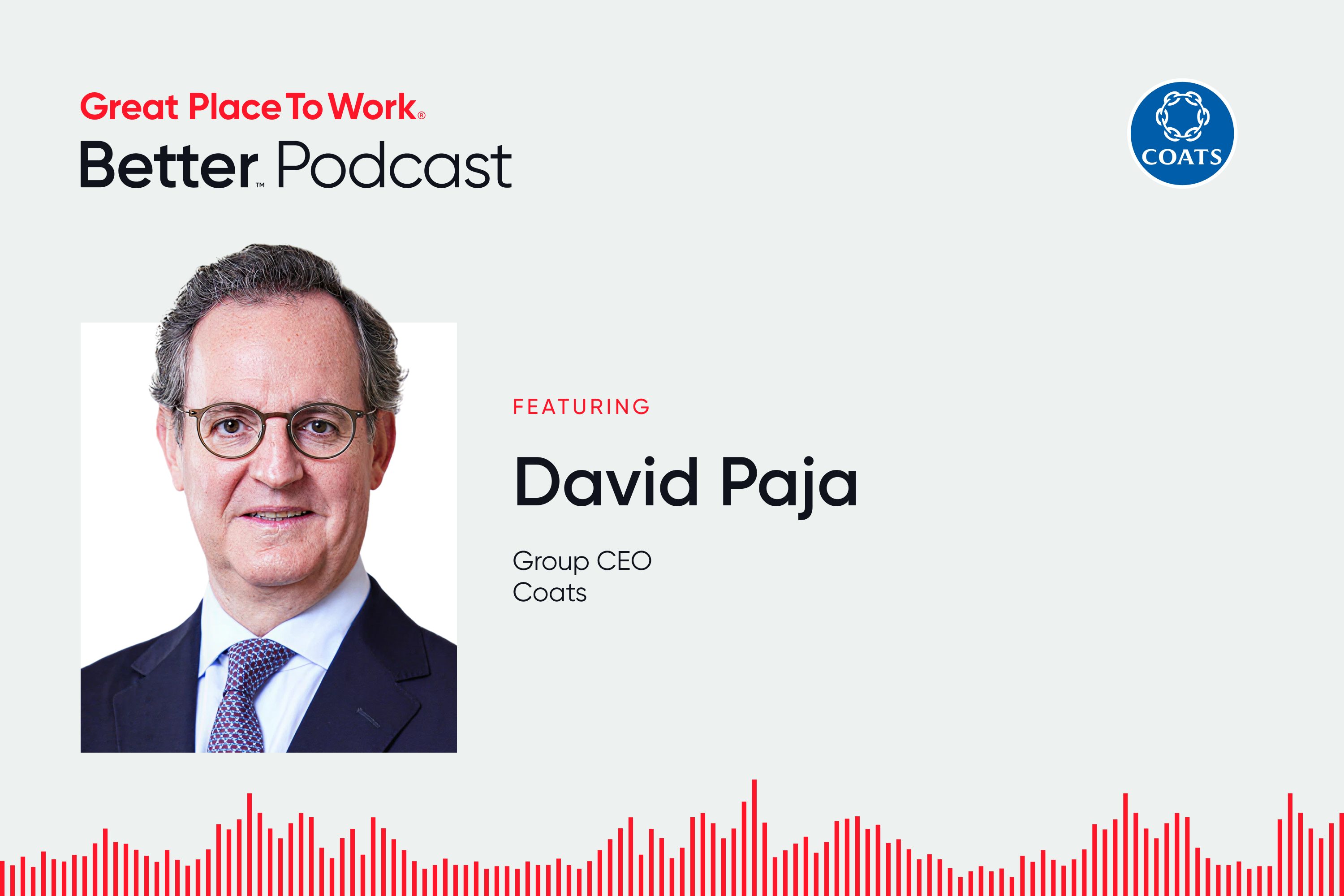Setting Identity-Based Goals for Success
At Great Place To Work®, we believe that trust is the foundation to building a strong workplace culture. The challenging thing about this belief is that trust is not something you can program, contract or outsource. Instead, trust has to be built on an individual basis, by leaders with their employees.
The building blocks of these trust-based relationships are interactions. Our individual behaviors determine the impact of these interactions—for better or for worse. As a result, the only way to change the level of trust in an organization is to change the behavior of the individuals in it. And while there are systems and tools that can help us with behavior change, successful change requires a deep commitment to the work beyond what any tool can provide.
Setting Goals from the "Inside Out"
This time of year, we are all still fresh in our New Year's resolutions. Eating better, going to the gym, watching less TV, calling your parents more often...the list goes on and on. We all make commitments to ourselves, and we all know what it is like to feel those commitments slip and eventually fade from view.
What is it about behavioral resolutions that make them so hard to keep?
We often resolve to take action from a place of deficit, thinking that we can fix our weaknesses with these commitments. Most resolutions are made not to further ourselves in something we already are, but to make up for something that we are not. Resolutions tend to be deficit-minded.
James Clear, a writer and blogger focused on behavioral psychology, habit formation, and performance improvement, illustrates a great model for making resolutions that stick. He argues that if we are to build our habits from the inside out, rather than the outside in, we will be vastly more successful in changing our behavior.
In his model of the layers of behavior change, Clear places more common goals on the two outer layers. These are related to performance and appearance. If we set goals based only on measurable performances or appearances, we might achieve them, but we are less likely to have made meaningful change internally that sustains the new behavior after the goals have been achieved.
On the other hand, if we set our goals from the inside out, starting first with who we are, or believe ourselves to be, we can attach our behavior to our identity rather than performance or appearance, which is far more likely to motivate true behavior change.
 Build habits from the inside out, rather than the outside in @james_clear http://bit.ly/1RtuCpw
Build habits from the inside out, rather than the outside in @james_clear http://bit.ly/1RtuCpw
http://jamesclear.com/identity-based-habits
Simple Steps to Change
This way of thinking moves us from a deficit-minded state, to the more positive identity-minded approach to change. As a leader, when you think about the long list of things you have to get done each day, it can feel daunting to add another meeting or task, and often you feel set up for failure before you have even begun.
Instead try these steps to frame your behavior change goals in a more positive manner:
- Ask yourself what kind of leader you are, and want to be.
- Identify one small behavior that if practiced each day, will help you live out your ideal leadership.
- Create a personal daily reminder to help you connect back to your identity as you live this behavior.
As I reflected on my last year, I realized that I am at my best when I act as a participatory leader, involving others as much as possible. This is the kind of leader I believe myself to be, but know that when things get challenging I tend to pull back and work on my own.
To more fully live my best self as a leader, I decided to make a commitment to delegate more to others. As a reminder, I simply placed a small post-it on the edge of my computer screen. Now when urgent emails come through, I reach out to others for help more often than I did in the past, involving others not only when it is convenient, but frequently and intentionally.
When putting thought and intention into commitments by attaching them to identity-based beliefs about yourself, behavior change will begin to feel easier. If you are setting the right change goals, and framing them in a positive manner, a simple post-it can have a surprisingly big impact on the leader you will become in 2016.








